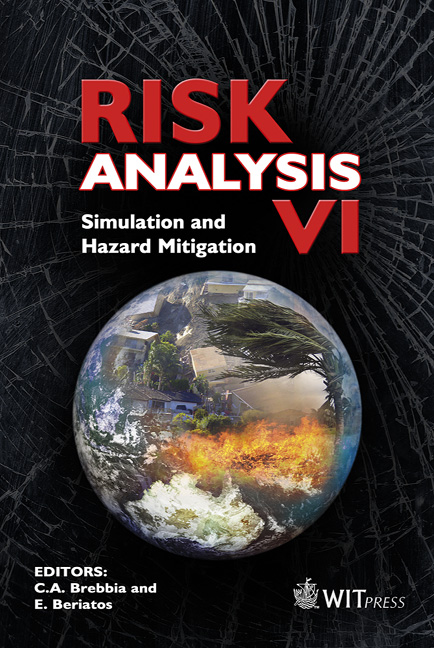Ranking Risky Alternatives: Innovations In Subjective Utility Analysis
Price
Free (open access)
Volume
39
Pages
12
Page Range
213 - 224
Published
2008
Size
635 kb
Paper DOI
10.2495/RISK080231
Copyright
WIT Press
Author(s)
J. W. Richardson & J. L. Outlaw
Abstract
Over the past 50 years there have been innovations in the quantitative methods available to rank risky alternatives (mean-variance (MV), first degree stochastic dominance (FSD), and second degree stochastic dominance (SDS)). Two recent innovations, stochastic efficiency with respect to a function (SERF) and StopLight are compared to MV, FSD, and SDS to demonstrate the strengths and weaknesses of each method. The results indicate that SERF and Stoplight are powerful tools that do not suffer from some of the limitations as the other risk ranking methods. Keywords: stochastic efficiency, stochastic dominance, mean variance, StopLight, certainty equivalent. 1 Introduction The increased perception of risk in our world, coupled with the availability of microcomputers and simulation software, has made Monte Carlo simulation the most widely used methodology for analyzing risky systems and business situations. The popularity of Microsoft® Excel in business to answer simple \“what if …” questions and the availability of simulation add-ins, such as: Simetar, @Risk, and Crystal Ball, has increased the sophistication of analysis given to risky business decisions. Analysts with a strong foundation in Excel can easily learn how to turn their business spreadsheets into Monte Carlo simulation models with these risk analysis add-ins. In addition, short courses are available for those who want help getting started with incorporating Monte Carlo simulation into their Excel business spreadsheets. After simulating alternative scenarios for a risky business decision the analyst is faced with the age old question of, \“Which scenario is best?” In many
Keywords
stochastic efficiency, stochastic dominance, mean variance, StopLight, certainty equivalent.





